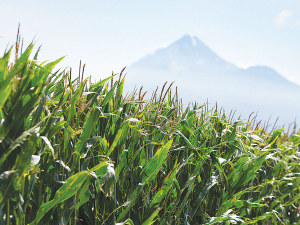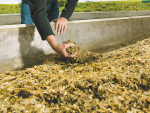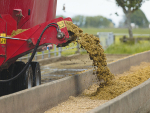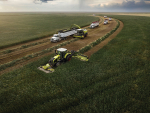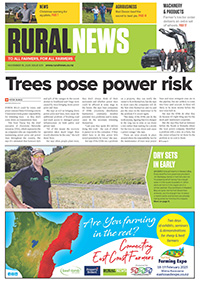The most profitable maize silage crop is the one which delivers the highest amount of energy per hectare. To achieve this, crop establishment is critical as maize silage and grain yield are greatly influenced by plant population.
Uniform stand emergence ensures each plant can grow to its full potential and deliver a high grain yield.
Planting date is an important factor in establishing a good maize stand. As the maize planting season draws near, there is always the excitement to get out and get started. But before you decide on the optimum planting date, there are several factors you should consider because the ideal date will vary by season and location.
Planting should only commence if soil temperatures within the top 5cm are warmer than 10˚C for at least a week. Cool soil temperatures can cause seed membranes to rupture, providing an entry and food source for soil borne pathogens. This will consequently reduce plant stands, decreasing potential yields.
For germination to occur, maize seed needs to absorb moisture. If seed absorbs cold water within the first few hours of planting, the germ of the seed can be damaged. This reduces metabolism and vigour, increasing sensitivity to herbicides and other chemicals. Ideally, aim to plant when there are greater chances of the paddock experiencing at least 48 hours of warm, moist conditions after planting.
When there is a forecast for bad weather, it is best to delay planting until the bad spell has passed. Planting into damp, cold soils, or just before an adverse weather event, could potentially be damaging to a successful maize crop establishment.
It is important to consider crop establishment method. Cultivating aerates, dries and warms the soil and removes the food source for slug and snails. Crops established by direct drill tend to encounter wetter, cooler growing conditions and there is often higher slug and snail pressure. These factors can negatively impact seedling germination and establishment.
A recent study conducted by Pioneer brand seeds measured the field emergence of 156 commercial maize grain and silage crops planted from Northland to Canterbury in 2021 and 2022. The results of this survey showed that field establishment of the maize seed was typically in the 90-100 percent range with only five paddocks (3 percent) having a field emergence less than 90 percent. Mean crop establishment was 97 percent in both seasons.
There was no difference in the establishment of crops planted into conventionally cultivated or strip till seed beds, but no till or direct drill paddocks had a slightly lower seedling establishment (Table 1).
| Method of Crop Establishment |
Establishment (percent)* |
| Convention cultivation |
97a |
| Strip till |
98a |
| No till/ direct drill |
91b |
*Means with different superscripts are statistically significant (P<0.05).
Soil type will impact planting time largely because sandy soils are usually much more forgiving than heavy soils because they are normally free draining and tend to dry out faster. Temperature fluctuations for sands tend to be greater, particularly on clear nights with cold air temperatures, which is why it is important to check soil temperatures prior to planting.
The amount of surface residue in the paddock will also influence the ideal planting time. Dense residue will encourage soils to hold moisture longer and cushions the soil from direct heat from the sun, resulting in lower soil temperatures. This could promote seedling diseases particularly in poorly drained paddocks.
Crop residues can also potentially lock up soil nitrogen. In grain crops where high levels of residue exist, consider using residue clearers on the planter to remove residue from seed furrows allowing quicker and more uniform emergence. Residue management post-harvest is key for setting up your next season’s crop.
Seed bed preparation can be challenging especially for wet pasture paddocks. Delaying cultivation until the soil has dried out is always a better option than creating clods and then trying to break them up.
While a fine, even seedbed is the gold standard, our field study showed that there was no difference in the establishment of Pioneer brand maize seed planted in excellent vs. acceptable seed beds (Table 2).
| Seed Bed Preparation |
Description |
Establishment (percent)* |
| 1 = Excellent |
Small crumb size which is friable in hand, no clods or previous crop residue, no cracks |
97a |
| 2 = Acceptable |
Medium crumb size which has minimal impact on emergence, small number of clods, low level or previous crop residue, small cracks |
97a |
| 3 = Poor |
Large crumb size severely impacting crop emergence, lots of clods or previous crop residue, big cracks |
92b |
The current recommendation is to plant 5 percent more seeds than the desired final plant population. This appears to be adequate for crops being established into well prepared seed beds using conventional cultivation or strip till. Where the seed bed is poor, the crop is being established via direct drill or no till, or planting is very early, growers should consider increasing the seeding rate even further.
The best way to approach your planting this season is to have a date range (window) that allows flexibility to plant to the conditions. It is almost always better to wait for ideal planting conditions even if that means waiting another week or two. Monitoring soil moisture, temperature, and weather forecasts is key. The best yields are achieved when soil temperatures are consistently at or above the minimum for germination and growth.
Ian Williams is a Pioneer forage specialist. Contact him at This email address is being protected from spambots. You need JavaScript enabled to view it.
https://www.pioneer.co.nz/





